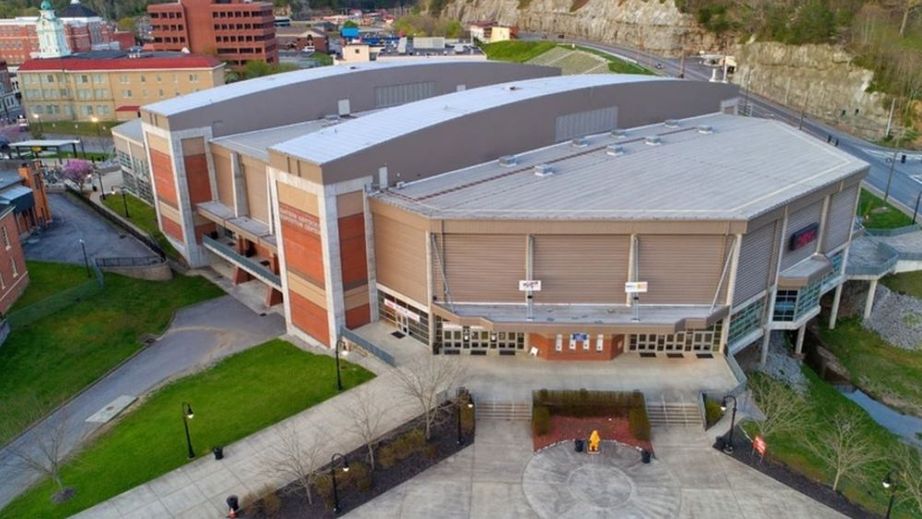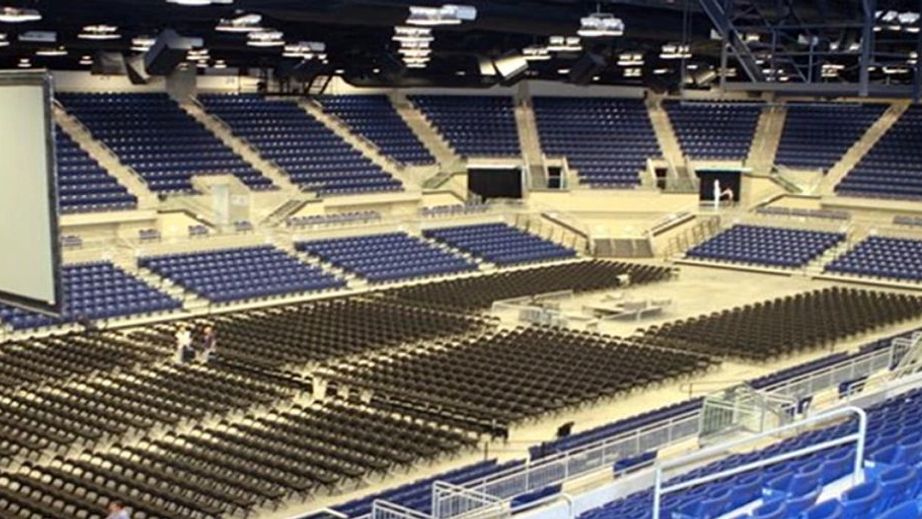Appalachian Wireless Arena: Upcoming Events & More!
Is the Appalachian Wireless Arena a beacon of community pride, or simply another venue lost in the shuffle? The answer, as with most things, is far more complex than a simple yes or no. The Appalachian Wireless Arena, a prominent fixture in Johnson City, Kentucky, has played a significant role in the region's cultural and economic landscape, hosting a diverse range of events that have drawn crowds from near and far. However, its continued relevance and the impact it has on the broader community remain a subject of ongoing discussion and scrutiny.
The genesis of the arena can be traced back to a vision of revitalizing the downtown area and providing a hub for entertainment and community gatherings. Its construction marked a pivotal moment, injecting life into a space that had previously seen limited activity. The initial promise was one of economic stimulus: increased tourism, job creation, and a boost to local businesses. Concerts, sporting events, trade shows, and various other performances were slated to fill the calendar, promising a steady stream of visitors and revenue. The arena quickly became a focal point, drawing national acts and regional talent, thereby establishing Johnson City as a destination for entertainment. The immediate impact was undeniable. Restaurants, hotels, and retail establishments experienced an uptick in business whenever an event was scheduled. The presence of the arena also enhanced the city's image, positioning it as a place that was investing in its future and offering amenities that would attract residents and visitors alike. But how has the arena's evolution shaped the region, and how does it fare today?
| Attribute | Details |
|---|---|
| Name | Appalachian Wireless Arena |
| Location | Johnson City, Kentucky |
| Address | 1501 University Dr, Johnson City, TN 37604, United States |
| Opened | Early 2000s (exact date varies by source) |
| Purpose | Multi-purpose arena; hosts concerts, sporting events, trade shows, and community events. |
| Seating Capacity | Varies depending on the event. Typically between 6,000-8,000 for concerts. |
| Major Events Hosted | Concerts by national and regional artists, minor league sports, trade shows, community gatherings, and political rallies. |
| Economic Impact | Provides jobs, generates revenue for local businesses (restaurants, hotels, etc.), and contributes to tourism. |
| Management | Managed by a team dedicated to booking events, facility maintenance, and providing services for event attendees. |
| Recent Upgrades/Renovations | Ongoing maintenance and periodic upgrades to keep the facility up to date and competitive. |
| Community Impact | Provides a venue for community events, fosters a sense of identity, and offers entertainment options for residents. |
| Challenges | Competition from other venues, booking high-profile acts, economic fluctuations, and maintaining a consistent event calendar. |
| Future Outlook | The arena's future depends on its ability to adapt to changing entertainment trends, secure funding for improvements, and attract a diverse range of events. |
| Official Website | Appalachian Wireless Arena Website |
One of the enduring strengths of the Appalachian Wireless Arena has been its versatility. The space is designed to accommodate a wide array of events, from concerts and sporting competitions to trade shows and community gatherings. This flexibility allows the arena to cater to a diverse audience and maximize its utilization. The ability to host different types of events is a crucial factor in the arenas long-term success. A consistent schedule of events, even if the offerings are varied, helps to ensure a steady flow of visitors and revenue. The arena has, for instance, provided a stage for acts ranging from country music legends to contemporary pop stars, as well as hosting minor league sports teams and local high school graduations.
The economic impact of the Appalachian Wireless Arena is a subject of significant debate. While it is widely acknowledged that the arena generates revenue for local businesses, the extent of that impact is often debated. Supporters point to the increased spending at nearby restaurants, hotels, and retail establishments on event nights. The arena's presence attracts visitors from outside the immediate area, creating a ripple effect that boosts the local economy. The employment opportunities the arena provides, from event staff to administrative roles, also contribute to the financial benefits for the community. However, critics argue that the economic benefits are not always evenly distributed. Some local businesses might not see a significant increase in revenue, and the arena's impact on overall economic growth might be less substantial than initially projected. Furthermore, there are concerns about the reliance on specific events and the volatility of the entertainment industry. Booking high-profile acts can be expensive and challenging, and the success of the arena is closely tied to its ability to secure such acts. The arena also faces competition from other venues in the region and from the broader entertainment landscape.
The community aspect, too, is a complex interplay of advantages and disadvantages. The arena provides a venue for community events, fostering a sense of identity and providing entertainment options for residents. It can serve as a gathering place, bringing people together and creating shared experiences. The presence of a professional sports team, for example, can generate civic pride and provide opportunities for local youth. However, the arena's impact on the community is not always positive. Some residents might complain about traffic congestion, noise, and other inconveniences associated with events. Concerns might also arise regarding the type of events being hosted and their potential impact on the community's values. Moreover, the arenas success can be highly dependent on external factors, such as the health of the entertainment industry and the overall economic climate.
The arena's management plays a crucial role in its success. The team responsible for booking events, facility maintenance, and providing services for event attendees must navigate a complex web of challenges. Booking high-profile acts requires a keen understanding of the entertainment industry, strong relationships with promoters, and a willingness to take financial risks. Maintaining the facility in good condition demands regular investment in upgrades and renovations. Providing a positive experience for event attendees is essential for building a loyal following and ensuring repeat business. Effective management also involves navigating the political landscape, working with local officials, and addressing concerns from the community. The management team must constantly adapt to changing market conditions and strive to remain competitive with other venues in the region.
The location of the Appalachian Wireless Arena, situated in Johnson City, Kentucky, is both an advantage and a disadvantage. Johnson City has a rich history and a strong sense of community, which can contribute to the arena's success. However, the area's economic challenges and the competition from other entertainment options present hurdles. The arena must compete with other venues in the region and with the broader entertainment landscape. The arena's location influences its ability to attract visitors, and its success is linked to the overall economic health of Johnson City and the surrounding areas. The arena management team must be strategic in targeting events that appeal to the local audience and in building relationships with regional promoters.
Looking to the future, the Appalachian Wireless Arena faces a series of challenges and opportunities. The arena's success will depend on its ability to adapt to changing entertainment trends, secure funding for improvements, and attract a diverse range of events. Staying relevant requires a commitment to innovation, from investing in new technologies to exploring different types of events. Securing funding for upgrades and renovations is a critical priority to remain competitive and meet the expectations of performers and attendees. The arena must also continue to foster positive relationships with the local community and address any concerns or challenges that might arise. This might involve establishing partnerships with local schools, supporting community initiatives, and engaging in open communication with residents.
The entertainment landscape is constantly evolving. The rise of streaming services, online events, and other forms of entertainment presents both challenges and opportunities for the Appalachian Wireless Arena. The arena must adapt to changing consumer preferences and strive to offer a unique and engaging experience that cannot be replicated online. This might involve investing in cutting-edge technology, offering immersive experiences, or partnering with innovative event organizers. In addition, the arena must navigate the complexities of the entertainment industry, from securing contracts with performers to dealing with changing regulations and economic fluctuations. The arena's future hinges on its ability to embrace change, adapt to new challenges, and remain a vibrant hub of entertainment and community engagement. The success of the Appalachian Wireless Arena is not simply measured in dollars and cents, or the number of events held. Its a complex tapestry woven from economic impact, community involvement, and the enduring power of shared experiences. Whether it continues to thrive depends on a multitude of factors, from the management's agility to adapt to the changing entertainment scene, to the sustained support of the community. The question of whether the arena is a success will be answered not just by the bottom line, but by the lasting legacy it leaves on the people of Johnson City.


